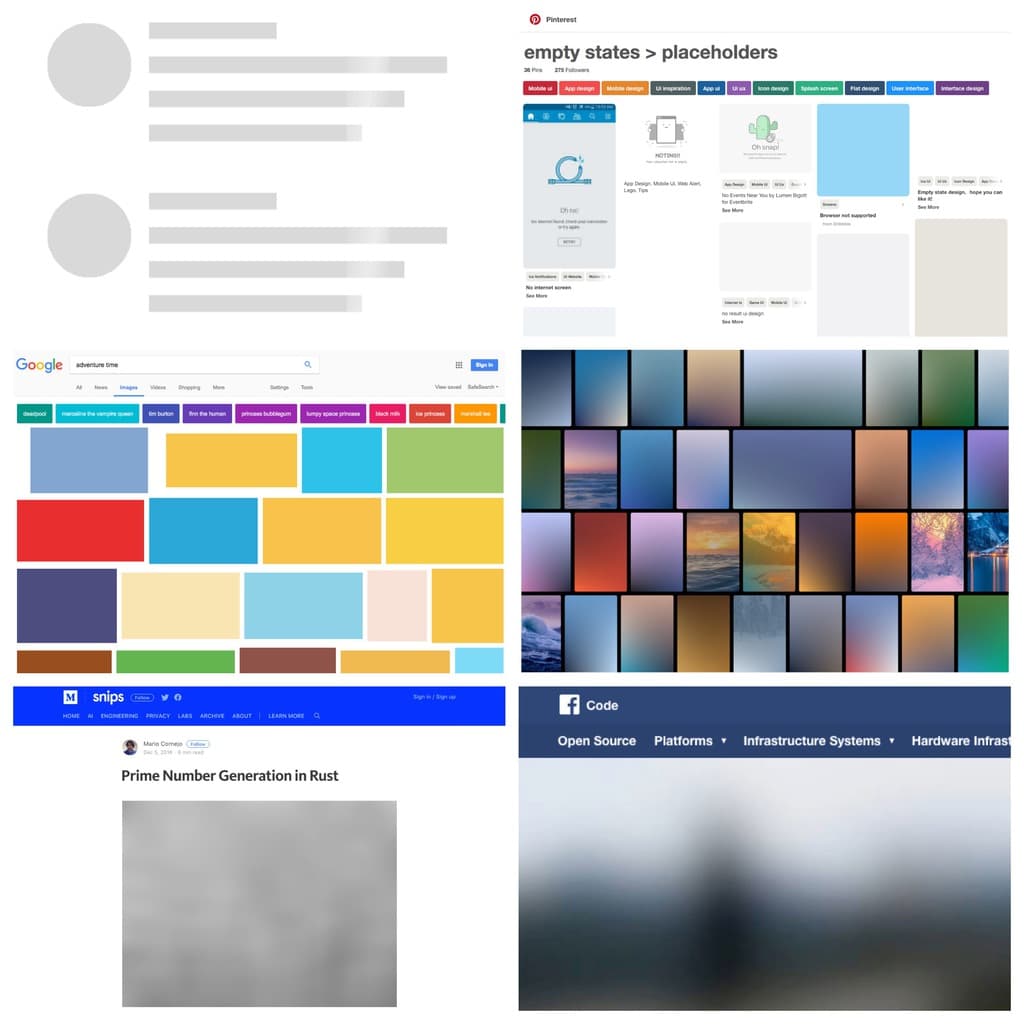SQIP - SVG-Based Image Placeholder
Overview
"SQIP" (pronounced \skwɪb\ like the non-magical folk of magical descent) is a SVG-based LQIP technique.
Examples
| Original | LQIP | SQIP default |
|---|---|---|
 |
 |
 |
| Size: | 354B | 895B (gz: 479B) |
 |
 |
 |
| Size: | 435B | 980B (gz: 513B) |
 |
 |
 |
| Size: | 442B | 937B (gz: 487B) |
Requirements
- Node.js >= v6 (https://nodejs.org/en/)
Non-64bit operating systems need:
- Golang (https://golang.org/doc/install)
- Primitive (https://github.com/fogleman/primitive) (
go get -u github.com/fogleman/primitive)
After installing Primitive, you may also need to add the path to the Primitive binary file.
For macOS
It would generally look something like
/Users/myMacbook/go/binTo do this on a Mac, type: sudo vim /etc/paths into your terminal, and add the path to your Primitive binary file, but be sure to add the full path, /Users/<username>/go/bin and not ~/go/bin.
For PC
Using the command line (https://www.windows-commandline.com/set-path-command-line)
Using a GUI (https://www.computerhope.com/issues/ch000549.htm)
Installation
npm install -g sqip Background
Image placeholders are a thing: from grey boxes in skeleton screens over boxes that show the predominant color of the image that will later occupy the space and CSS color gradients made from two dominant colors up to actual low quality raster images downscaled to a few pixels, saved in low quality and then blurred to provide a preview of image contents.
Many major players have adopted one of these image placeholder techniques: Guypo incepted LQIP in 2012 and Akamai adopted it as part of their image optimization tools, Google started using colored placeholders a long time ago, Facebook, Pinterest and Medium made a significant impact with their LQIP implementations and the most popular JS libraries for responsive images include LQIP implementations.
Overview of Image Placeholder Techniques

On the low end of the bytesize spectrum of image placeholder implementations, we have skeleton screens and colored boxes, weighing only a few extra bytes each, but providing no preview of image contents. On the high end of the bytesize spectrum, the LQIP technique ships an actual raster image, which gives a good initial impression of image contents to come, but weighs more heavily in bytesize.
If we disregard Facebooks's native-app implementation of shipping a custom image decoder that enables them to hardcode image headers, the current minimum bytesize for LQIP raster images is ~400-600 bytes. At this byterange, the preview image often looks distorted and coarse, especially on HiDPI screens. Many other LQIP implementations go for preview images of ~2kb in size, which provides a much better initial visual impression but comes at the cost of significantly increased bytesize for the LQIP implementation.
SQIP is an attempt to find a balance between these two extremes: it makes use of Primitive to generate a SVG consisting of several simple shapes that approximate the main features visible inside the image, optimizes the SVG using SVGO and adds a Gaussian Blur filter to it. This produces a SVG placeholder which weighs in at only ~800-1000 bytes, looks smooth on all screens and provides an visual cue of image contents to come.
CLI Examples
# Generate a SVG placeholder and print an example <img> tag to stdout sqip input.jpg # Save the placeholder SVG to a file instead of printing the <img> to stdout sqip -o output.svg input.jpg # Customize the number of primitive SVG shapes (default=8) to influence bytesize or level of detail sqip -n 4 input.jpg # Specify the type of primitive shapes that will be used to generate the image (default=0) # 0=combo, 1=triangle, 2=rect, 3=ellipse, 4=circle, 5=rotatedrect, 6=beziers, 7=rotatedellipse, 8=polygon sqip -m 4 input.jpg # Set the gaussian blur (default=12) sqip -b 3 input.jpgNODE API
Node API takes filename and number of primitives in an object, returns an object with SVG, base64 encoded SVG and image dimensions.
Input options:
- filename (required)
- numberOfPrimitives (default=8)
- mode (default=0)
- blur (default=12)
Returns:
- final_svg - string
- svg_base64encoded - string
- img_dimensions - object
Examples
const sqip = ; const result = ;Credits
- trivago N.V. (https://github.com/trivago)
- Efe Gürkan Yalaman (https://github.com/efegurkan)
- Michael Fogleman (https://github.com/fogleman)
Licence
This is free and unencumbered software released into the public domain.
Anyone is free to copy, modify, publish, use, compile, sell, or distribute this software, either in source code form or as a compiled binary, for any purpose, commercial or non-commercial, and by any means.
In jurisdictions that recognize copyright laws, the author or authors of this software dedicate any and all copyright interest in the software to the public domain. We make this dedication for the benefit of the public at large and to the detriment of our heirs and successors. We intend this dedication to be an overt act of relinquishment in perpetuity of all present and future rights to this software under copyright law.
THE SOFTWARE IS PROVIDED "AS IS", WITHOUT WARRANTY OF ANY KIND, EXPRESS OR IMPLIED, INCLUDING BUT NOT LIMITED TO THE WARRANTIES OF MERCHANTABILITY, FITNESS FOR A PARTICULAR PURPOSE AND NONINFRINGEMENT. IN NO EVENT SHALL THE AUTHORS BE LIABLE FOR ANY CLAIM, DAMAGES OR OTHER LIABILITY, WHETHER IN AN ACTION OF CONTRACT, TORT OR OTHERWISE, ARISING FROM, OUT OF OR IN CONNECTION WITH THE SOFTWARE OR THE USE OR OTHER DEALINGS IN THE SOFTWARE.
For more information, please refer to http://unlicense.org/